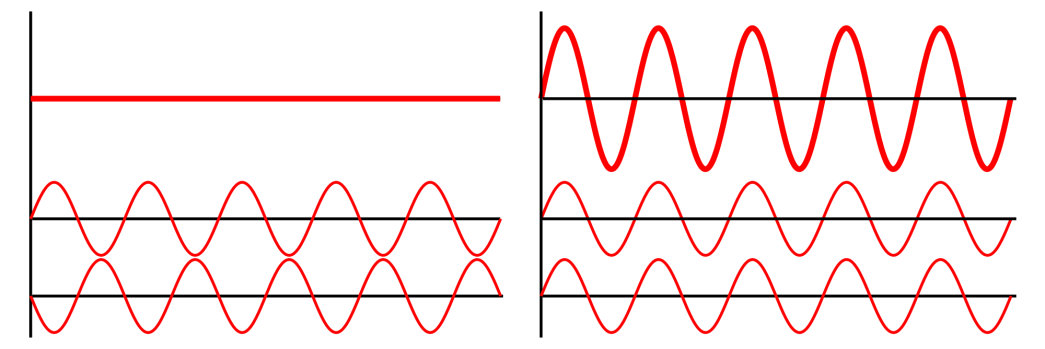
The interference phenomena can take place
(A) in transverse wave
(B) in longitudinal wave
(C) in electromagnetic wave
(D) in all waves
Answer
218.4k+ views
Hint: Interference takes place for any two waves which are coherent and have zero or constant phase difference irrespective of what type of waves they are.
Complete step-by-step solution
Interference is based on the concept of superposition where two waves overlap over each other and give a common resultant wave. Interference takes place when two waves of exactly same frequency travel in a medium in the same direction simultaneously then due to their superposition at some points intensity is max and at some point intensity is min. So, it does not depend on what kind of wave is superposing as long as they are from the same coherent sources.

Therefore, the correct option is D.
Note: The conditions necessary for interference to take place is both waves interfering with each other must be from the same source, that is sources must be coherent and they must have zero or constant phase difference.
This MCQ question can be solved with a trick as well. Look at the options. We know that the electromagnetic waves are transverse in nature. So choosing option C would mean that option A is also true and vice versa. This makes it impossible to opt for A or C. That way we have reduced our options to B or D.
Methods like these can be used in case you don’t know the answer
Complete step-by-step solution
Interference is based on the concept of superposition where two waves overlap over each other and give a common resultant wave. Interference takes place when two waves of exactly same frequency travel in a medium in the same direction simultaneously then due to their superposition at some points intensity is max and at some point intensity is min. So, it does not depend on what kind of wave is superposing as long as they are from the same coherent sources.

Therefore, the correct option is D.
Note: The conditions necessary for interference to take place is both waves interfering with each other must be from the same source, that is sources must be coherent and they must have zero or constant phase difference.
This MCQ question can be solved with a trick as well. Look at the options. We know that the electromagnetic waves are transverse in nature. So choosing option C would mean that option A is also true and vice versa. This makes it impossible to opt for A or C. That way we have reduced our options to B or D.
Methods like these can be used in case you don’t know the answer
Recently Updated Pages
Chemical Properties of Hydrogen - Important Concepts for JEE Exam Preparation

JEE General Topics in Chemistry Important Concepts and Tips

JEE Atomic Structure and Chemical Bonding important Concepts and Tips

JEE Amino Acids and Peptides Important Concepts and Tips for Exam Preparation

JEE Extractive Metallurgy Important Concepts and Tips for Exam Preparation

Algebra Made Easy: Step-by-Step Guide for Students

Trending doubts
JEE Main 2026: Application Form Open, Exam Dates, Syllabus, Eligibility & Question Papers

Derivation of Equation of Trajectory Explained for Students

Hybridisation in Chemistry – Concept, Types & Applications

Understanding the Angle of Deviation in a Prism

Understanding Collisions: Types and Examples for Students

Understanding Atomic Structure for Beginners

Other Pages
JEE Advanced Marks vs Ranks 2025: Understanding Category-wise Qualifying Marks and Previous Year Cut-offs

Units And Measurements Class 11 Physics Chapter 1 CBSE Notes - 2025-26

NCERT Solutions For Class 11 Physics Chapter 8 Mechanical Properties Of Solids

Motion in a Straight Line Class 11 Physics Chapter 2 CBSE Notes - 2025-26

NCERT Solutions for Class 11 Physics Chapter 7 Gravitation 2025-26

How to Convert a Galvanometer into an Ammeter or Voltmeter




